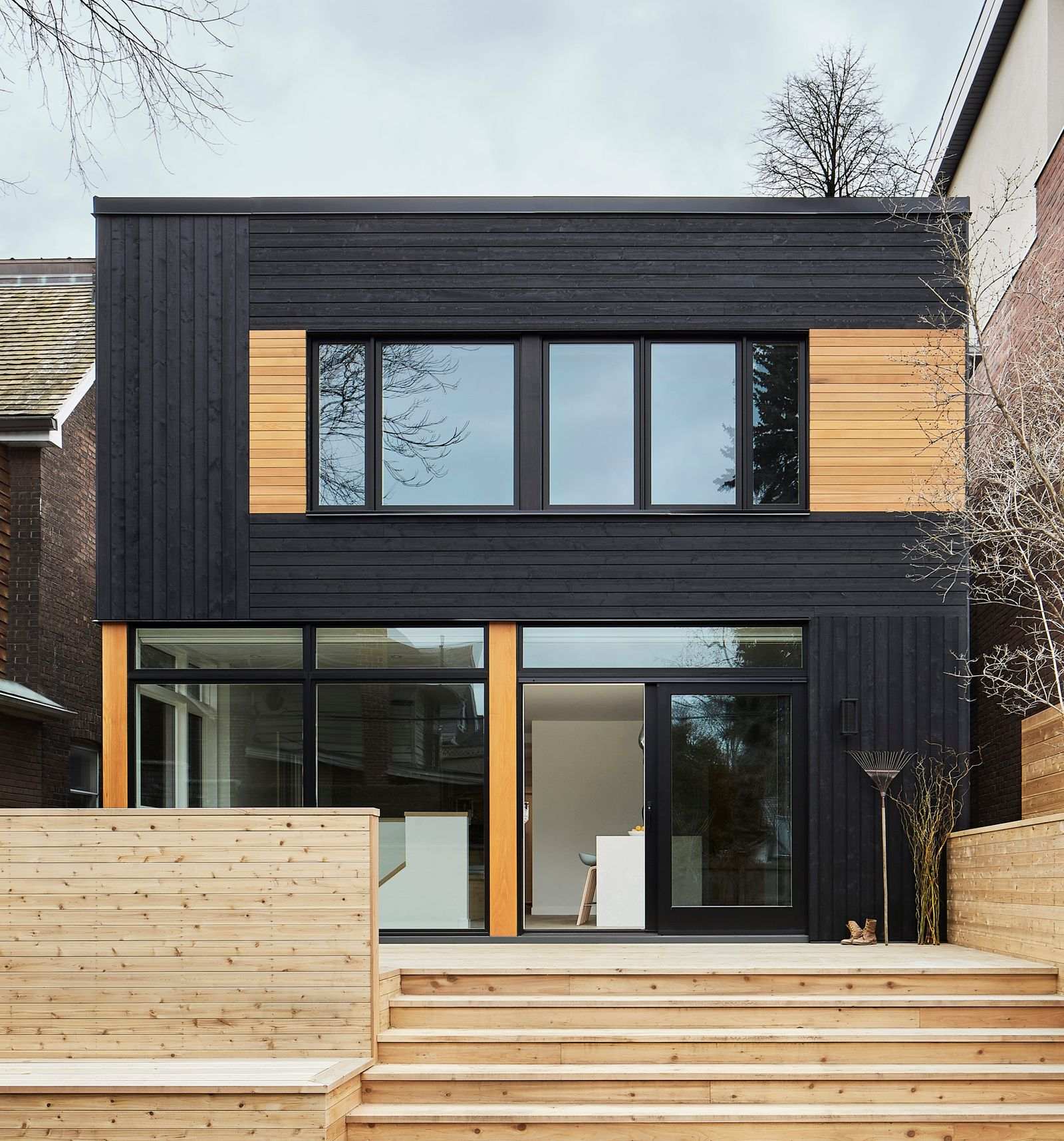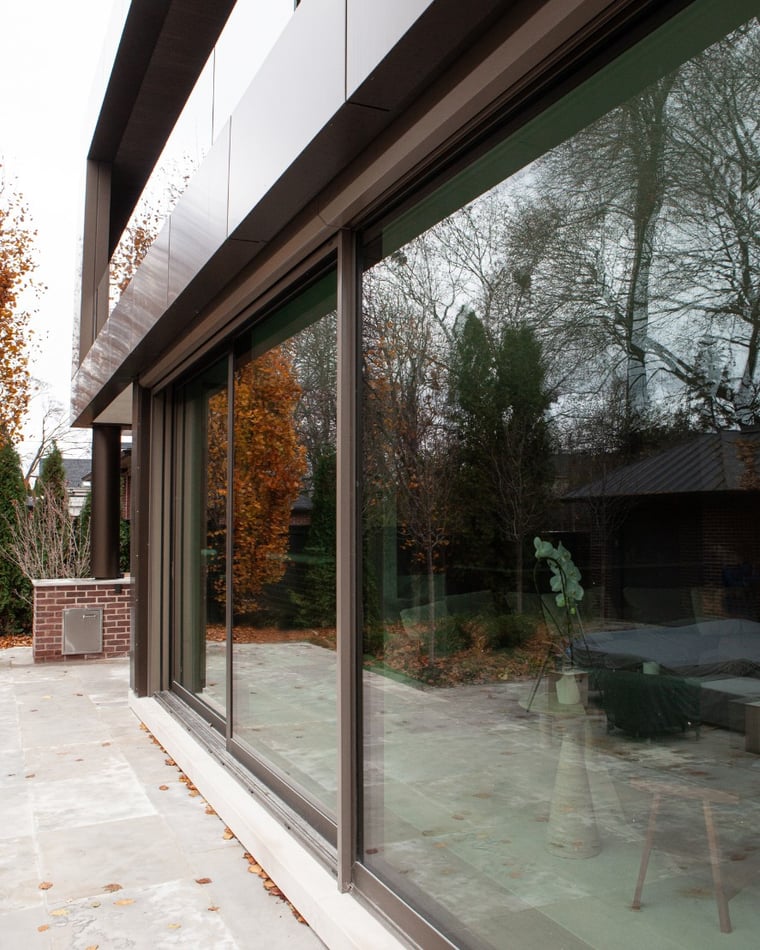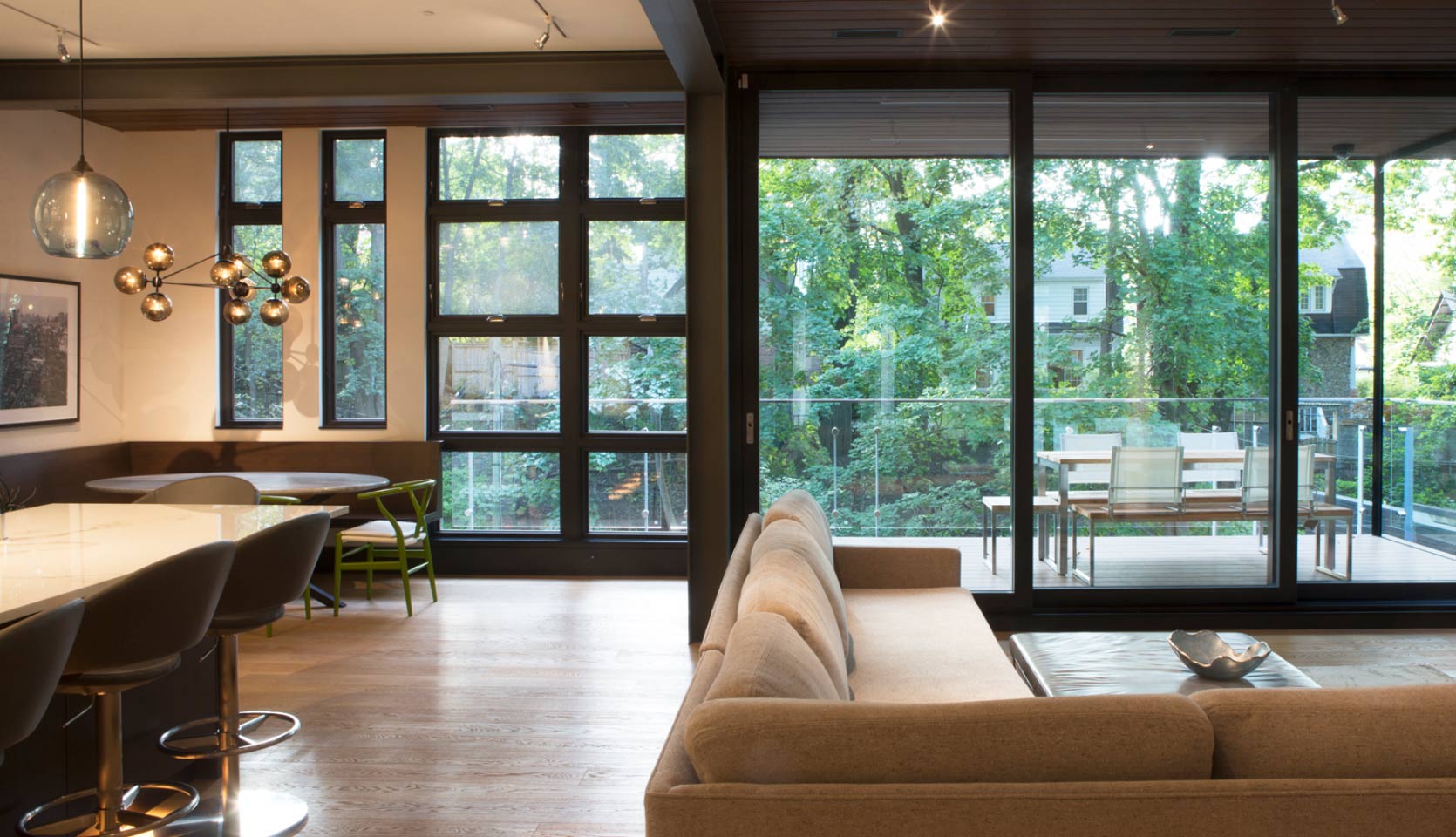
Everything to Consider When Expanding Your Toronto Home
Whether it's a growing family, a desire for modern conveniences, or the pursuit of a more refined lifestyle, the solution for many in Toronto's fine neighbourhoods is not to move, but to build thoughtfully onto what already exists. A home addition in Toronto presents an opportunity to expand your living space without sacrificing location, architectural character, or community. Yet this opportunity is not without complexity. Between zoning regulations, tree protection bylaws, and the nuances of design integration, a successful addition demands foresight, collaboration, and craftsmanship.
SevernWoods Fine Homes has guided discerning homeowners across Rosedale, one of Toronto's more desirable neighbourhoods, The Annex, Forest Hill, Leslieville, and beyond through functional and elegant expansions. In this guide, we’ll walk you through what it means to add to your home in Toronto, from building up or out to navigating city processes and preserving what makes your home distinct.
Table of Contents
- How Much Does a Toronto Home Addition Cost?
- Home Additions in Toronto
- Building Up vs. Building Out
- Why Homeowners Build Additions
- What Impacts the Cost and Timeline of Toronto Home Additions?
- Navigating Zoning and Permits in Toronto
- Tree Protection and Urban Forestry Compliance
- Working with an Architect and Builder in Harmony
- Frequently Asked Questions About Toronto Home Additions
- Your Toronto Addition: Add with Intention, Build with Confidence
What Is a Home Addition?
A home addition is the architectural act of expanding your home’s footprint or volume, either by building outwards, upwards, or both. It’s about creating more liveable space without losing the intrinsic value of the home you already cherish.
Unlike cosmetic renovations, additions engage with the home’s structural and spatial logic. They may introduce a new level, a more functional kitchen, a garden-level suite, or a wing that gracefully extends into the backyard.
How Much Does a Toronto Home Addition Cost?
The cost of a home expansion in Toronto varies widely based on numerous factors we'll later discuss, including the size and complexity of the project, the quality of materials chosen, and site-specific considerations. While it's challenging to provide a precise figure without a detailed assessment, homeowners can expect the following general ranges:
Cost-per-square-foot Estimates for Additions
Home additions typically range from $400 to $500 CAD per square foot. For instance, a 600-square-foot addition might cost between $240,000 and $300,000 CAD.
-
Smaller Projects: Smaller additions, such as a 200-square-foot extension, could start around $160,000 CAD, although smaller projects often have a higher cost per square foot due to fixed costs spread over a smaller area.
-
Larger Projects: Expansive additions, like a 2,000-square-foot second-story addition, might range between $800,000 and $1,000,000 CAD or more, depending on design complexity and finish levels.
See our detailed complimentary cost guide for more information about our current pricing.
Home Additions in Toronto
Lot width plays a defining role. On narrower 20- to 30-foot lots, typical in central Toronto, options are constrained, often limited to a straight rear addition. On wider 50- or 60-foot lots found in older inner suburbs, there’s far more design flexibility, including side additions, garages, or larger expansions that still preserve yard space.
We often see projects where nearly the entire home is rebuilt through a substantial addition, sometimes retaining just a sliver of the original structure, particularly when existing foundations or materials no longer support a quality renovation. These transformations, especially on larger lots, result in essentially new custom homes that still respect the existing neighbourhood rhythm.
At SevernWoods, we tailor each addition to both the home and the homeowners. Some additions are architectural transformations, others are carefully restrained interventions.
Building Up vs. Building Out: Two Distinct Strategies for Home Additions
There are practical and architectural differences between building up and building out. Understanding the merits of each helps shape your project’s design direction and allows us to tailor solutions that respect both your goals and the constraints of your site.
Building Up (Second-Storey Additions)
In neighbourhoods with limited lot depth or valuable yard space, such as The Annex, Leslieville, and Davisville, adding a second storey is often the most effective way to gain square footage.
Benefits of Building Up
-
Maximizes internal space without reducing your outdoor area.
-
Ideal for properties with tight setbacks or small rear lots.
-
Opens possibilities for vaulted ceilings, skylights, and improved views.
Key Considerations for Adding a Second Storey
-
Requires engineering review and foundation reinforcement.
-
Typically involves temporary displacement of residents during construction.
-
May require minor variances for height, massing, or shadowing.
Building Out (Rear and Side Additions)
Rear additions are common in neighbourhoods like Riverdale, Leaside, and The Beach, where there is more backyard depth or a desire to create indoor-outdoor living experiences.
Benefits of Building Out
-
Adds accessible main-floor space ideal for aging in place.
-
Enables open-concept designs that flow into the garden or patio.
-
Less structural disruption than building vertically.
Key Considerations for Building Out
-
Reduces yard space, which may impact landscaping or outdoor use.
-
Tree Protection Zones may restrict excavation or foundation placement.
-
May require zoning relief for lot coverage or depth.
Why Toronto Homeowners Build Additions
Toronto’s housing stock tells a story of postwar practicality: modest brick homes on modest lots, built for a different era. Yet today’s families crave light-filled kitchens, multi-functional living areas, and private spaces that support rest and restoration. Home additions allow them to stay in the neighbourhoods they love while creating homes that serve their lives now.
1. You’ve Outgrown the Original Layout
In most Toronto homes built before 1970, the main floor was compartmentalized, kitchen in one corner, dining in another, formal living at the front. As daily life increasingly centres around the kitchen and connected living spaces, these layouts feel restrictive.
The only way to achieve modern function, an open kitchen with adjacent family space, clear sightlines, and generous light is often to expand the home’s footprint. On tight downtown lots, this usually means a rear addition. On broader lots, the addition can be distributed more creatively, across the rear, side, or both.
2. You Want a Modern Primary Suite or an Extra Bedroom
Whether it’s a young family needing four bedrooms or a couple envisioning a spa-like ensuite, the second floor often becomes the focus. Some homeowners reconfigure their entire upper level into a luxurious primary suite with high ceilings, ample closet space, and a five-piece bath.
Where lots are narrow, even an addition may not deliver a full fourth bedroom. But it often allows for the creation of a dramatic and well-appointed principal suite, turning one of three bedrooms into something extraordinary.
3. You’re Planning to Stay Long-term
The perfect lot isn’t always a new one. Many of our clients have lived in their homes for years, love their neighbourhood, and see no reason to leave. In these cases, a home addition becomes the tool to stay rooted while dramatically upgrading comfort and function.

4. You Want to Preserve Backyard Space
On deep lots, building out is straightforward. But many homeowners are cautious not to sacrifice their outdoor living. In these cases, building up becomes the solution.
When the backyard is only 30 or 40 feet deep to begin with, every inch matters. Adding another storey, such as a third floor on a two-storey home, allows families to expand without encroaching on outdoor space used for entertaining, pets, or play.
What Impacts the Cost and Timeline of Toronto Home Additions?
1. Design Complexity and Finish Level
Architectural design is the single most influential factor in cost and build time. A simple rear bump-out with minimal structural changes differs dramatically from a second-storey addition that reconfigures the entire home’s layout. Additions involving custom millwork, soaring ceilings, large-format glazing, or intricate heritage-inspired detailing naturally require more time and investment.
2. Structural Reinforcement
Building vertically often means reinforcing the existing foundation and supporting structure. Particularly in older homes, this may involve significant underpinning, steel installation, or re-engineering, especially when new loads are added to aging framing systems.
3. Mechanical Upgrades
Mechanical systems, HVAC, plumbing, electrical, frequently need to be upgraded or relocated to support the added area. These behind-the-walls investments are critical for long-term performance, particularly if energy efficiency or home automation is a goal.
4. Site Conditions and Access
Urban lots present logistical challenges. Limited side yard access, proximity to neighbours, and street parking restrictions can slow down demolition, framing, and deliveries. Weather also plays a role, with winter conditions affecting excavation or roofing timelines.
5. Permitting and Approvals
Nearly every home addition in Toronto will exceed what the zoning bylaw technically permits. Most homes already exceed the allowable gross floor area (GFA) for their lot, which means that even modest additions typically trigger the need for zoning variances. This requires a formal application to the Committee of Adjustment, adding time and complexity to the pre-construction phase.
6. Heritage and Tree Protection Constraints
If the property is located in a heritage conservation district, near a ravine, or contains protected trees (either privately owned or city-owned), additional reports and clearances are required before permits are issued. These elements not only lengthen timelines but may necessitate changes to the design.
7. Change Orders
Change orders are a pricing factor that is entirely within your control. A change order is any change to the work stipulated in your contract, whether that’s something you decide to add (such as square footage, architectural embellishments, and extra finishes), omit (maybe you decide you don’t need that extra half-bathroom after all), or substitute (perhaps you can’t stop thinking about that beautiful cherry hardwood flooring). Naturally, change orders drive your price up and also often extend your timeline.
Navigating Zoning and Permits in Toronto
Toronto’s zoning bylaws are as layered as the city’s architectural fabric. While they’re designed to preserve neighbourhood character, they often present a maze of regulations that must be negotiated early in the design process.
Understanding GFA (Gross Floor Area) Limits
Each residential lot in Toronto is assigned a maximum allowable gross floor area, typically expressed as a ratio relative to lot size. However, most existing homes, especially in mature neighbourhoods, already exceed this threshold. Any above-grade expansion, whether building up or out, will likely require zoning relief to proceed.

Applying for a Minor Variance
When your proposed addition exceeds local zoning allowances for height, depth, setbacks, or floor area, you must apply to the Committee of Adjustment (CoA). This process includes:
-
Detailed design plans prepared by your architect or designer
-
A zoning review
-
Public notice and hearing
-
Justification that the changes are “minor” and compatible with surrounding homes
This is not uncommon, nor is it a barrier. At SevernWoods, we build the expectation of variances into our pre-construction planning, collaborating with designers and architects to ensure submissions meet both technical and community standards.
Neighbourhood-specific Considerations
Zoning rules differ subtly between districts. In some parts of Forest Hill, for example, side yard setbacks are more generous than in The Annex, while lot coverage allowances in Riverdale may be more restrictive. Even when two lots appear similar, their planning permissions may differ based on zoning overlays, past variances, or secondary plan designations.
Heritage Properties and Conservation Districts
If your home is on the City’s heritage register or within a designated heritage conservation district, any exterior alteration, including additions, must be reviewed by Heritage Planning. This adds a layer of oversight but also offers an opportunity to elevate design through sensitive integration. Proper documentation, such as heritage impact assessments, elevation drawings, and materials specifications, is required to secure approval without undue delay.
Tree Protection and Urban Forestry Compliance
Trees are deeply protected under Toronto’s municipal by-laws for both their ecological value and the character and continuity they lend to neighbourhoods. Whether a tree is on your property, your neighbour’s, or city-owned, it can significantly impact your ability to proceed with a home addition.
When Tree Protection Rules Apply
If your proposed addition falls within a Tree Protection Zone (TPZ), typically determined by the trunk diameter and species, you’ll need to submit an application to injure or remove the tree, even if it’s on your own property. The larger the tree, the greater the radius of the protected root zone, and the more impact it has on design flexibility.
City trees (usually located within the front boulevard) are subject to the most stringent controls. On private property, any tree with a trunk diameter of 30 cm or more (measured at 1.4 metres above ground) is subject to protection and may not be removed without a permit.
What’s Involved in the Permit Process to Injure or Remove a Tree in Toronto?
To apply for tree removal or injury, homeowners must submit the following elements.
-
A report from a certified arborist
-
Site plans showing tree locations and construction boundaries
-
Rationale for the request and mitigation strategies
-
Photographs, species identification, and replanting proposals
Design and Structural Implications
In many projects, trees must be preserved. We’ve designed additions where the basement footprint was reduced, or the main floor was cantilevered, solely to avoid damaging a large mature tree’s root system. While this level of care protects the urban canopy, it can require significant design compromise.
Toronto Additions: Working with an Architect and Builder in Harmony
One of the most critical decisions in your addition journey is assembling the right design and construction team. For SevernWoods clients, this means engaging a skilled architect early and choosing a builder who speaks the same language.
Why We Don’t Use Design-build
Unlike design-build firms that manage design and construction under one roof, we believe the best design comes from independent architects. We consistently see greater creativity, better contextual fit, and a higher level of detail when working with Toronto’s top architectural practices.
This separation of roles also creates a healthy design tension, where aesthetics are championed by the architect and buildability is stewarded by the contractor. When done right, this collaboration ensures neither budget nor design suffers.
Our Pre-construction Planning Model
At SevernWoods, our pre-construction process includes important early steps such as:
-
Feasibility reviews (What can your lot accommodate? What’s allowed under zoning?)
-
Budget alignment (Back-of-napkin clarity before committing to formal plans)
-
Coordination with arborists and permit consultants
-
Preliminary build sequencing to manage timelines and expectations
This phase sets the tone for transparency, trust, and control. It also enables clients to make informed decisions before engaging in expensive permit drawings or engineering.

Frequently Asked Questions About Toronto Home Additions
How long will a home addition in Toronto take?
At SevernWoods, we build timelines around realism and readiness, not false promises. You’ll know what to expect from the outset. Timelines vary based on scope, but for a full-service, custom home addition, especially in established neighbourhoods, most projects range from 9 to 18 months from initial planning to final completion. Our process includes the steps below.
-
2–4 months for design development and pre-construction planning
-
3–6 months for permit and zoning approvals
-
4–8+ months for construction, depending on complexity and season
Can I stay in my home during construction?
It depends on the nature of the addition. For rear or partial main-floor additions, staying in place may be feasible with some inconvenience. For second-storey or full gut renovations, temporary relocation is typically recommended. We help clients weigh their options early, and when needed, can phase the project to minimize disruption.
Do I need a permit for every addition?
Yes. All above-grade additions in Toronto require a building permit, and in most cases, also require one or more zoning variances. If trees, heritage designations, or ravine overlays are involved, additional permits or clearances may apply. SevernWoods manages this process in collaboration with your architect and consultants to avoid surprises.
What happens if my home already exceeds zoning limits?
This is common. Most Toronto homes already exceed current zoning allowances for gross floor area (GFA). Any new addition that increases above-grade living space will likely require a minor variance application through the Committee of Adjustment.
This is not unusual, nor is it prohibitive. It simply means your project needs thoughtful design, proper documentation, and an experienced team to shepherd it through.
How do you ensure my addition looks like it’s always belonged?
That’s where great architecture and detail-driven building come together. We collaborate with Toronto’s leading architects to design additions that respond to your home’s original proportions, materials, and rhythms. We also ensure seamless transitions between old and new, from brick coursing to floor plate alignment, window placement to interior flow.
Can I add a second storey to a bungalow?
This is one of the most common addition types in Toronto. Many post-war bungalows sit on solid foundations and spacious lots, making them ideal candidates for vertical expansion. We can help you assess the structural capacity and zoning allowances early, so your design reflects both your vision and what’s achievable without costly delays.
Will I lose backyard space with a home addition?
Only if you choose to build out. For clients who want to preserve their outdoor living area, we often recommend building up or cantilevering upper storeys, minimizing the ground-level footprint.
Your Toronto Addition: Add with Intention, Build with Confidence
It’s time to honour the character of your home, respond to the rhythm of your neighbourhood, and elevate how you live every day. SevernWoods partners with discerning homeowners and leading architects to deliver home additions that feel effortless, timeless, and deeply personal. If you’re considering an addition, we’ll help you assess what’s feasible, what’s beautiful, and what’s next. Schedule a pre-construction consultation. Let’s map out your home’s next chapter together.


